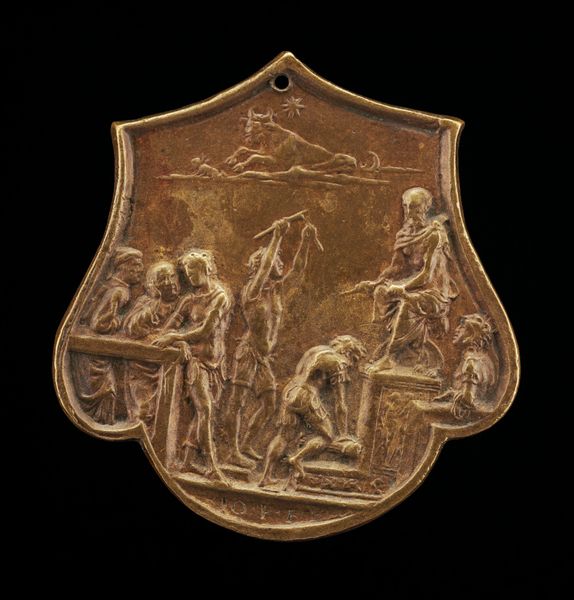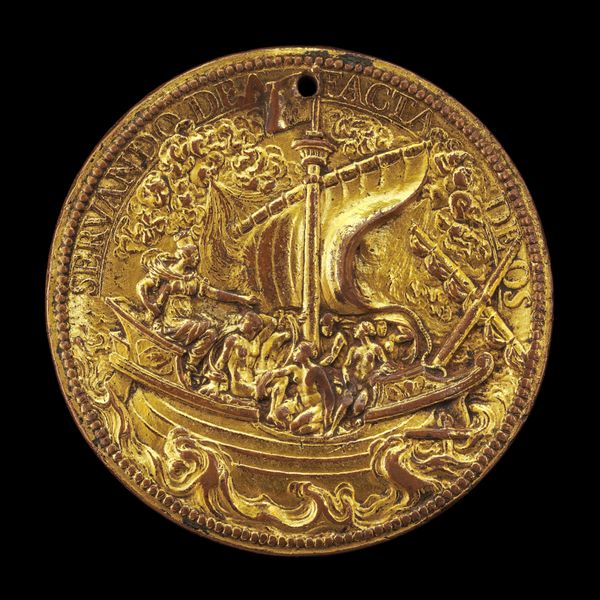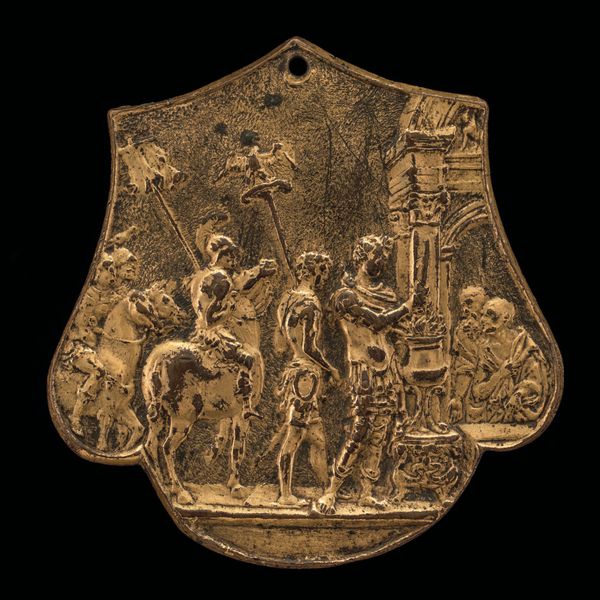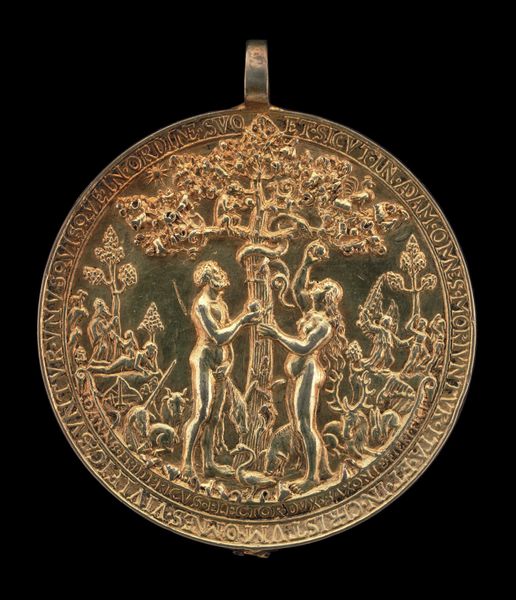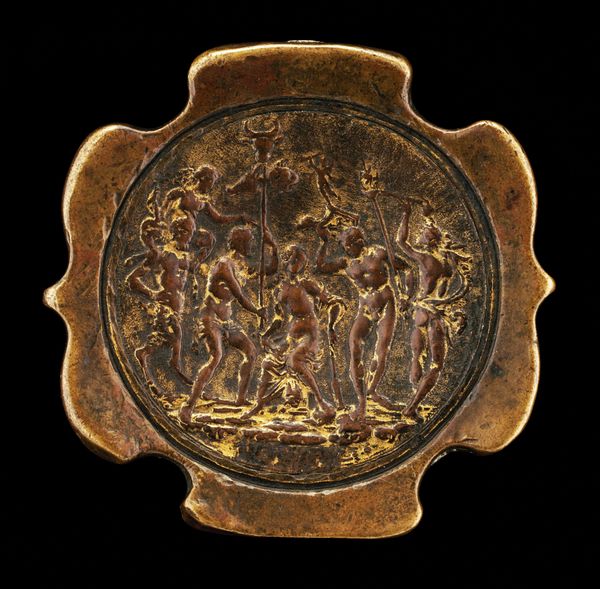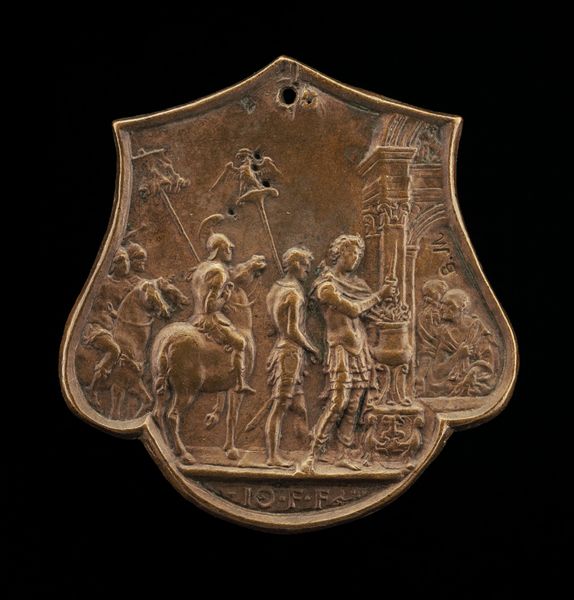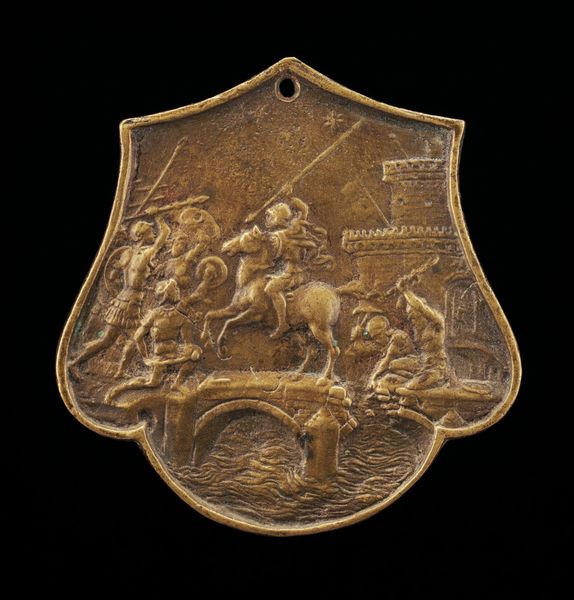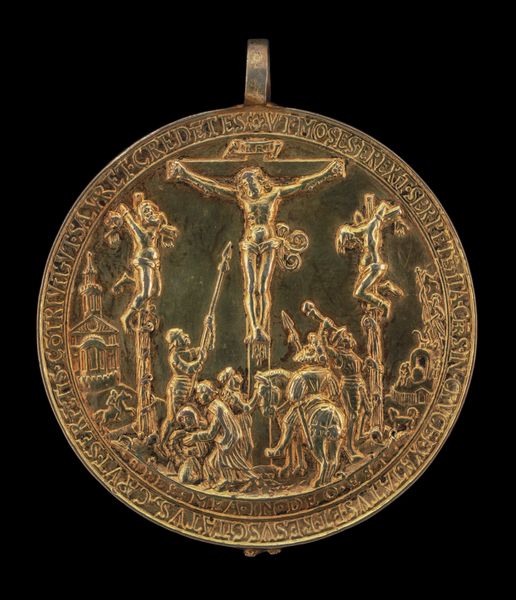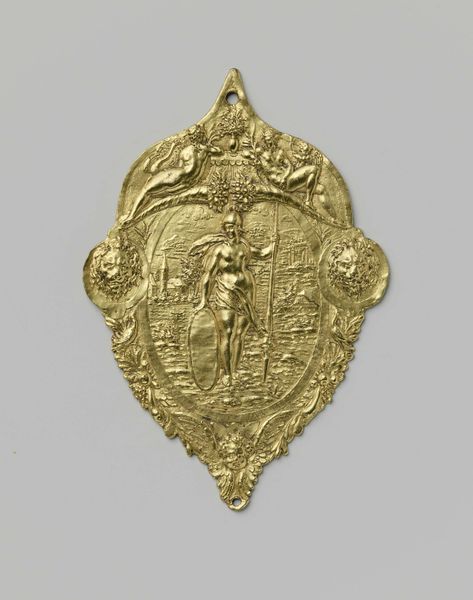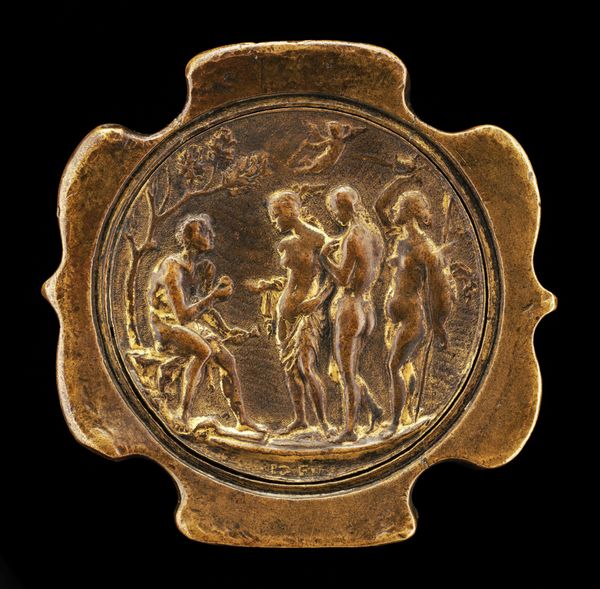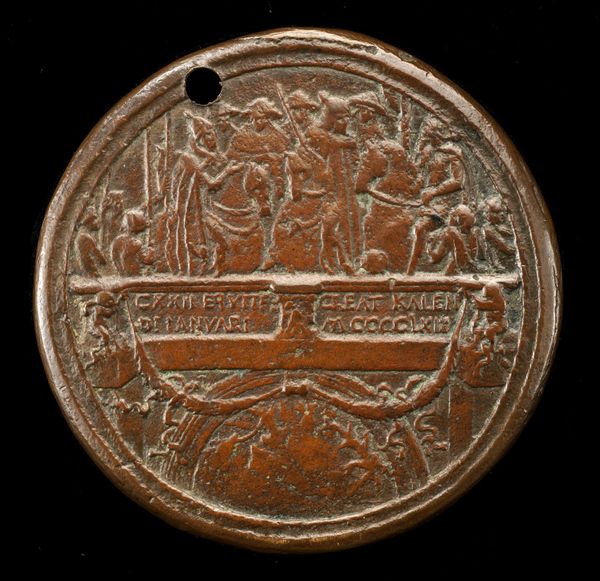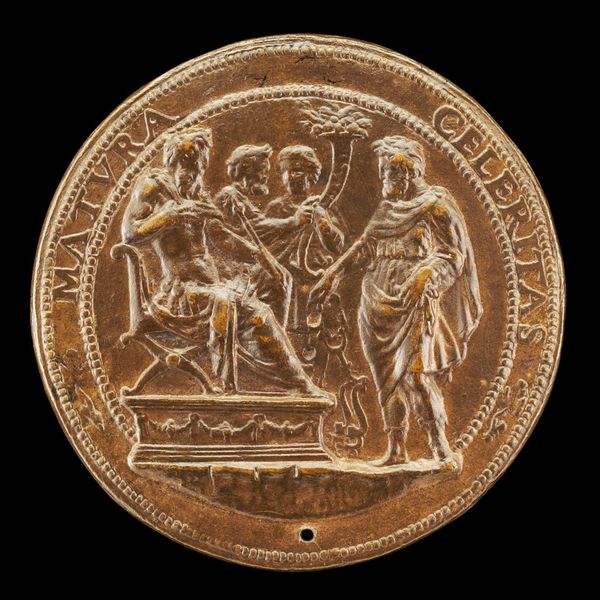
metal, relief, sculpture
#
narrative-art
#
metal
#
sculpture
#
relief
#
11_renaissance
#
sculpture
#
history-painting
Dimensions: overall (with palmette frame): 8.49 x 8.37 cm (3 5/16 x 3 5/16 in.) center section: 5.08 x 5.02 cm (2 x 2 in.) gross weight: 58.05 gr (0.128 lb.)
Copyright: National Gallery of Art: CC0 1.0
This is a gilded bronze plaquette of 'The Rape of Ganymede' made by Caradosso Foppa in Italy, sometime around the late 15th or early 16th century. It depicts the classical myth of Ganymede being abducted by Zeus in the form of an eagle. In Renaissance Italy, such mythological scenes weren't simply about aesthetic beauty; they were potent cultural symbols. Ganymede, representing youthful beauty, was often associated with homoerotic desire, a complex issue in a society governed by strict religious and social codes. The classical allusions would be very pointed in the cultural circles of the time. These plaquettes often served as decorative objects for the elite, demonstrating their knowledge of classical antiquity. It's worth considering, then, how this piece might have functioned within the social and political landscape of Renaissance Italy, perhaps as a subtle expression of cultural or sexual identity. Historical research into the social context of Renaissance art, including studies of patronage, social norms, and the reception of classical themes, are vital when interpreting works like this. They remind us that art is deeply embedded in its own time.
Comments
No comments
Be the first to comment and join the conversation on the ultimate creative platform.

